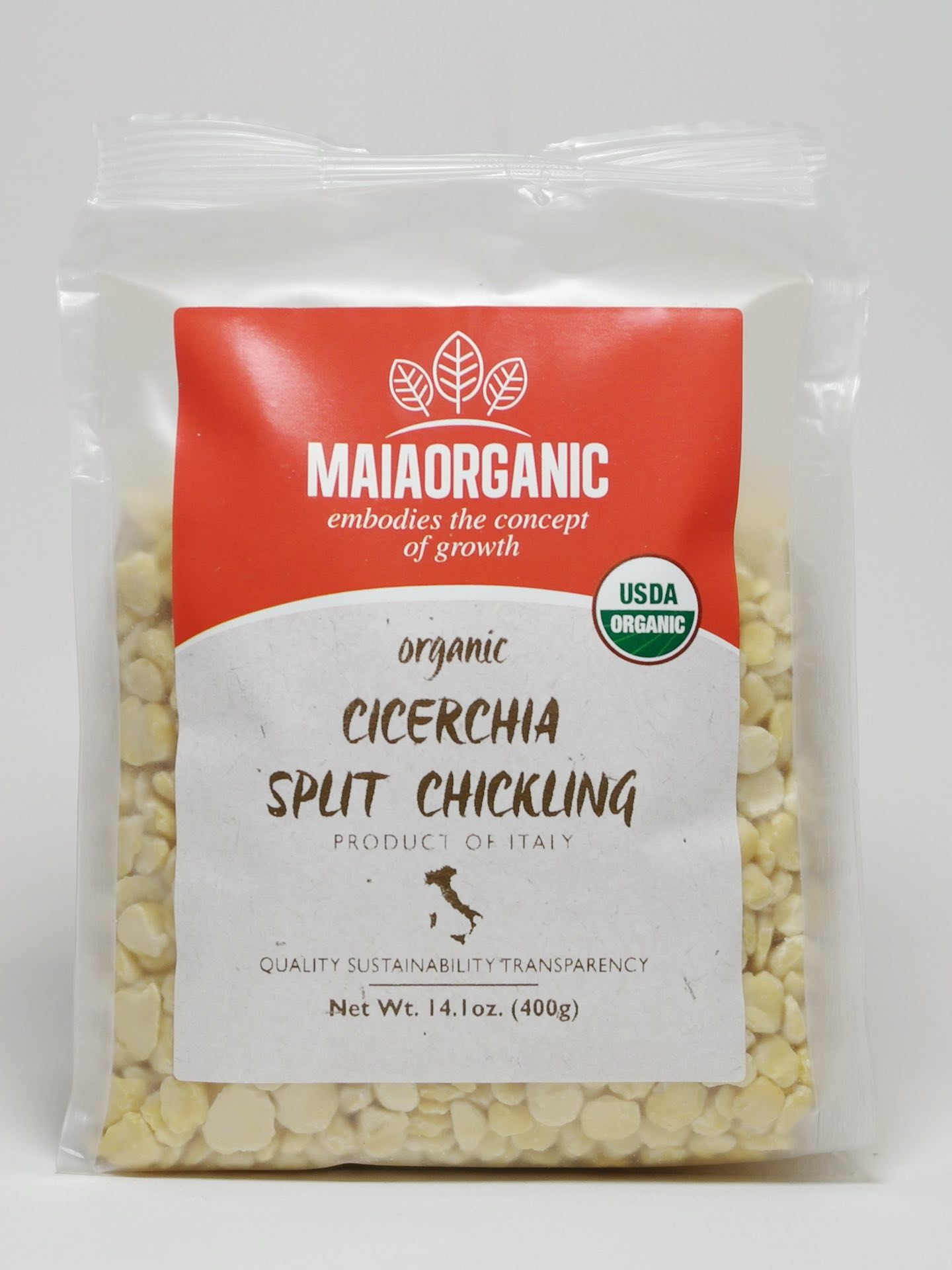The origin of chickling is dated more than 4000 years ago and comes from ancient Babylon. When it spread to the Mediterranean basin, the Romans used to refer to it as “cicercula”, and there were about twenty species cultivated in central and southern regions of Italy. Over time, the production gradually decreased until almost disappearing. Only recently, few farmers from central and south Italy have started cultivating this ancient plant again.
Chickling is very appreciated by food-lovers for its intense taste and by farmers for its hardiness. Able to grow in any type of soil, even in the worst conditions, the plant of chickling is resistant to drought and disease, and does not require much special care.
Chickling richness comes from its nourishing mineral components: in fact, this legume contains high amounts of calcium and phosphorus, as well as B vitamins and polyphenols providing antioxidant activity. Furthermore, through the hulling process, high biological value proteins increase up to an astonishing 30% and the almost complete absence of sugars makes the glycaemic index extremely low.
Since the skin of this grain is very hard, soaking and cooking time could be excessively long, this is why we chose to offer you Hulled Chickling.

* Chefs Tips *
Hulled chickling
2 hours of soaking
50-60 minutes of cooking
*Before using Cicerchia rinse it thoroughly under running water and remove any debris that you may find
*Find the perfect texture by tasting your Cicerchia while cooking
*Prepare a quick snack by turning Cicerchia into crostini toppings or by enjoying it plain dressed with just a sprig of Rosemary & Extra-Virgin Olive Oil
*Go Vegan while warming up your winter with a savoury Olive Mince & Cicerchia Soup
*Offer yourself a typical Italian Sunday lunch with a generous dish of Cicerchia Purée & Mushroom Tagliolini
*Spoil yourself and have a Cicerchia Parmantier + Sausage & Wild Herbs Curls
*Never forget a drizzle of Extra-Virgin Olive Oil
*Still hungry? Have more here!
